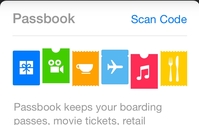 By Chuck Martin
By Chuck Martin
Mobile payments are starting to get serious.
Besides some larger iPhones and cool new watches, Apple’s major foray into mobile payments yesterday will have the most significant impact on mobile commerce.
This is not to say that the masses of consumers will quickly ditch their credit and debit cards and move to mobile payments just because it can be done with the new iPhone 6.
It’s more that the masses are about to learn and see how paying with a phone (or a watch, for that matter) can be done. Apple has that kind of clout.
Unlike the joint venture of Verizon, AT&T and T-Mobile called Softcard, formerly known as Isis, Apple Pay has fewer moving parts and in many ways is a more elegant and seamless payment system.
The process of paying with Softcard takes an app download, going to the phone store to get a new SIM card, opening an account, loading a credit card or two and then finding an establishment where it works. The actual payment process typically ends with a paper receipt being printed that needs to be signed, just as in a credit card transaction.
Apple greatly simplified the process since it had an advantage by already having some of the pieces in place.
The company has hundreds of millions of customer credit cards on file, courtesy of iTunes. And to add a card, a consumer just takes an iPhone photo of the card, which then gets verified and added to the mix.
Apple’s Passbook, already used for aggregating and storing tickets, boarding passes and the like, gets added to the mix as a neat, central repository and clearinghouse of sorts.
Another in-place plus for Apple is the fingerprint scanner introduced a while back to assure the identity of the mobile shopper along with various, industrial grade security features.
No other entity has such a combination of digital capabilities already humming along together at scale.
“This is a revolution in the way consumers will pay,” said Barry McCarthy, president of global payment processor First Data Financial Services. “This is an ecosystem-wide change.”
First Data supplies some of the back-end technology and security for Apple Pay and is just one of the many companies Apple aligned with as part of its mobile payment rollout.
Apple yesterday announced deals with American Express, Visa and MasterCard as well as major merchants including Macy’s, Bloomingdale’s, Walgreens, Subway, McDonald’s, Whole Foods and Disney stores, to name a few.
The iPhone 6 also comes with NFC (near field communication), ending the last major phone-maker holdout for the technology.
“They finally bit the bullet and joined the NFC train,” said Jordan Gray, manager of the creative lab at the agency Organic. “Apple adheres to the NFC standards, which already had a foot in the door and now Apple will popularize it.”
That is the power of Apple, to create, stage, popularize and take things mainstream.
And now consumers are about to see or experience how a mobile phone can be used to pay by waiving or tapping the device from an ease-of-use standpoint.
However, Apple is not likely to be the only potential beneficiary of this new behavior.
For example, the CurrentC mobile wallet, which launches next year as we wrote about here last week (Softcard, CurrentC: The New, Big Names in Mobile Payments), also requires a consumer to bring their phone to a payment device.
In the case of Apple Pay, the NFC chip does the work while with CurrentC a code on the mobile phone screen is held in front of a payment terminal at checkout. To the consumer, both actions may seem relatively the same.
The CurrentC consortium of merchants already also has an A-list of participants, including Walmart, Target, Best Buy, 7-Eleven, Dick’s Sporting Goods, Kohl’s, Old Navy, Sam’s Club, Banana Republic, Sears, CVS, Dillard’s, Gap, Kmart, Lowe’s, Target, Rite Aid, Bed Bath & Beyond, Sunoco, Exxon Mobile, 76, Shell, Phillips 66, Publix, Giant Eagle, ShopRite, Meijer, Dunkin’ Donuts, Wendy’s, Baskin Robbins and Olive Garden.
The CurrentC group, planning to trial its mobile payment system this year and roll it out nationally next year, could benefit as more consumers get used to waving or tapping a mobile device to pay with Apple Pay.
The majority of smartphone owners have Android devices, many of which also can be used at the same NFC checkout stations going live to accommodate Apple Pay.
The main point is that the introductions at such scale as Apple Pay and CurrentC are about to make mobile payments highly visible to consumers.
The question remains that if they build it, and build it well, will the consumers come.
This is hardly a slam dunk, even for Apple.
Chuck Martin is Editor of the mCommerce Daily at MediaPost and writes the daily MobileShopTalk column. He is the author of “Mobile Influence,” “The Third Screen,” and “The Smartphone Handbook.” He is CEO of Mobile Future Institute. Chuck Martin is a frequent Mobile Keynote Speaker and Mobile Marketing Speaker internationally. He also addresses Social Media in Mobile.










